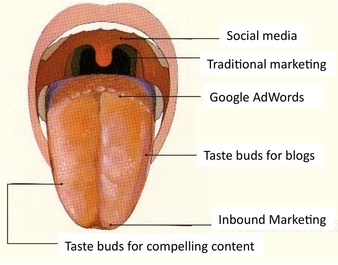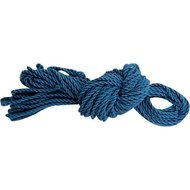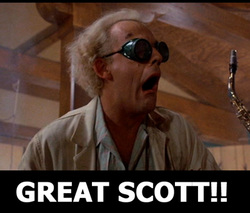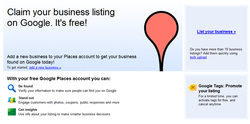- Permission Marketing (E-mail): Ask each customer for his or her e-mail to build a list for an e-mail marketing campaign. Do not to sell the list to Nigerian spammers. Send a periodic newsletter with offers, coupons, news or helpful hints, but try to be more educational than anything. Newsletters could also just include a recycled blog post from the week. If you keep track of your customers with a simple database (Excel is excellent for this), detailing what services they utilize, frequency of use, what purchases they’ve made, or models they own, et cetera, then it’s possible to cater certain messages and offers to a specific segments of customers.
Practically free marketing tactics your small business should start doing, like now. Hey, sit back down, you haven’t read any of the tips yet. These are the quickest, dirtiest, most dangerous and downright cheapest marketing tactics money can (or can’t, depending on how you look at it) buy. You must read this unabridged version of the Internet (click here) to completely comprehend the tips I explain below. It’s requisite. Or you can know nothing about marketing at all and do just fine. Read at your own risk. Enjoy at your anxiousness. But really, the concepts outlined here take little more than an investment of your own time. Can’t beat that.
0 Comments
 Lick the screen when your commercial comes on TV, chew on that advertisement in the paper, gnaw on one of your Facebook fans…or don’t do any of those things, especially the biting, because that’s not what I’m talking about and you’re not a teething toddler. One of the most important aspects of marketing is measuring and tuning. In much the same way that a chef tastes as she cooks, you should be making sure your marketing is appetizing. Sample the quality of the output and adjust accordingly. Chef Gordon Ramsay, of Gordon Ramsay’s Kitchen Nightmares, has to tell most of the ham-fisted chefs on his show to taste the food they are preparing. He usually admonishes, “Are you so [expletive deleted] arrogant that you can’t taste your [expletive deleted] food?!” It doesn’t matter how good you think your marketing is or what fancy agency or expert you have in charge; if they aren’t measuring and fine-tuning then they aren’t doing their job. Even the best chefs taste their food; it’s compulsory. And sometimes all it needs is a dash of salt, but sometimes that can make a world of difference. Marketing is a chronic, always present, habitual process because it must be monitored and modified. No chef is above tasting, no marketer above monitoring/measuring or modifying. The Web, in fact, greatly simplifies the measurement and monitoring process in some ways. For example, Facebook, Google AdWords, YouTube, your Web site (which should have monitoring tools) all provide enough insights to determine if what you’re doing is working or not, if anything else. Google AdWords most likely provides some of the most detailed metrics one will care to scour over. CTR (click through rate), CPC, (cost per click), and CPM (cost per thousand) all help you decide if what you are doing is effective, and are just a few of the many bits of data, details and measurements available to those operating an AdWords campaign. The great thing about AdWords is that you can distinguish in essentially real-time if any modifications behaved in a positive manner. A quick check of the CTR and you’ll be able to tell if that dash of salt did what it was supposed to do. Cheers to tasty marketing! On a related note, David Meerman Scott, new marketing guru, author, blogger and speaker had a rant about ROI, at one point explicating, “What’s the ROI of putting on your pants in the morning?” Needless to say, it’s worth a listen. Click here to hear it. I feel ROI has contracted a daunting reputation in its frequent, excessive usage, and I didn’t bother mentioning it in my post on purpose. One reason being; online efforts, especially social media, have intangible benefits unseen in metric-riddled dashboard read outs. Blogs, a powerful social media presence and so on are developed over time. Remember, you’re effectively developing a friendship with people online. It can’t be bought and it will not be acquired overnight, or even in a month for that matter.  Does this look like your marketing? No, not the string theory from particle physics, I'm talking about the one from economics and how it relates to new age marketing. Here's the idea; if you place a piece of string on a table and attempt to push it across the table, from one end to the other, it gets bunched up and messy almost immediately. What do you think happens when you attempt to pull the string instead? Yeah, much more fluid and smooth process, right? Pulling leaves a rather straight string, while pushing creates a snarled mess. The quickest way from point A to point B is a straight line. Why force that string to follow that path when you could practically invite it to do the same thing?
The same goes for Old, Traditional Marketing vs. New Marketing. Traditional marketing being; TV commercials and radio and print advertisements and so on and so forth, that by and large interrupt and push a message out. On one end of the string are people (consumers) and the other end is your business. Traditionally, marketing was behind the people, pushing them to the business’ product/service. In this mass marketing push, there is much noise and clutter to compete with in getting peoples’ attention; hence the jumbled string. Now, new marketing tactics are on the other end of the string, permitting clear channel of entry. When was the last time you got in your car and navigated to the nearest highway in search of billboards to shop, help make informed purchases, or otherwise? You won’t do that, I’m sorry if you do, but you will navigate the information superhighway to do this. Meaningful information is delivered to you because you ordered it, not a crapshoot of information and advertising that may or may not have any relevancy to you. Search results and ads are displayed because they are highly relevant and appropriate to what you searched for. Do you see how this is essentially pulling a string and not pushing the string? All those links you click on, you’re willingly clicking. You ordered them to be delivered to you, instantly. Even with the AdWords, those ads show up at your convenience. That’s crazy! New Marketing pulls, while Old Marketing pushes. One is forceful and creates clutter, while the other performs the same process with an almost effortless ease. Figure out who is looking for you (your business, products, services) and make it easy for them to find you. A web site’s existence doesn't equal effectiveness, such as traffic, interest, awareness, or lead conversion. Most online tactics, whether it’s Facebook or a blog, take tender loving care to raise and grow. In fact, it’s pretty much like having a pet. When was the last time you didn’t feed, walk, or pay any attention to your dog for a week, let alone a single day? Just like your Doberman, your Facebook page needs nurturing. A fleshed out web site is nothing more than a shell, or as commonly referred to in the world of new marketing, an online brochure. A Facebook page updated about as frequently as you get your oil changed is not so much a point of attraction as it is a rotting piece road kill. A stagnant social media presence in particular is more of a detriment than an advantage. An anesthetized Facebook page or Twitter feed isn’t attracting anyone. It also offers apprehension from a consumer perspective. The last thing you want is someone to question your credibility, capabilities, or even existence as an organization. Create, aggregate/share, and inform your customers with information relevant to them. Ask yourself how can you help. Is there is advice or technical information that can be offered? How can you entertain your followers? Making a short, fun video (quality, or even rapidity, of the content often trumps overproduced, stale videos). Even a quick 30-second snippet from an event you hosted is well worth sharing. Upload photos, and then upload more! Tell the story of your business. Short on ideas? Ask your followers, post a query on Facebook or Twitter. Lastly, cultivate interaction: two-way communication. Don’t talk “at” people (that’s the old way of doing things) talk to them, and engage. Respond to comments and questions; initiate the conversation. You must stay determined in taking care of your online presence. Feeding your dog when it’s most convenient is most careless. Don’t worry if you’re unsure about what exactly to share at first or are intimidated by the tech talk. Most people who call themselves “social media experts” are experts at pretending to be an expert and much of the technical lexicon is gobbledygook. There is no more powerful tool available in the marketing arsenal, no bigger bang for your buck, than a compelling web presence. In the world of consumer behavior there are two types of exposure to information, and they provide practical elucidation for inbound marketing.
First, there’s intentional exposure, which is goal directed search behavior; and next, accidental exposure, where there’s an unintended exposure, such as an ad in a magazine, a commercial or walking billboard. Which one of these sounds more like inbound marketing? Accidental exposure is basically interruptive marketing, the traditional outbound techniques that devour marketing budgets and that business schools love to teach. Intentional exposure is all but a definition for inbound marketing; there is an active (deliberate) search to make sense of something. In that goal directed search online, relevant sites and information are presented. The sites with valuable content are utilized more often. Amazon.com just isn’t the online equivalent of Wal-Mart, it’s a hub for user-generated content (UGC): product reviews and ratings. That’s valuable content when making a purchase. More importantly, in the decision making process this is considered intentional exposure, because people actively seek out Amazon product reviews before buying a product. Further, web page ads are being ignored, ignored in the same fashion that you would flip past an advertisement in a magazine; they can even be outright blocked online. That’s like buying a magazine with all the ads and inserts torn out. Think like a publisher and generate some content, like Crutchfield.com does, or facilitate UGC like Amazon and overlook the accidental, interruptive, exposure, the same way you and everyone else disregards advertisements. Do you think a Places page with just a link to your Web site is going to cut it? Time to get your hands dirty, or at least your typing fingers… if your keyboard is dirty. Start by checking out the top five results for a few different Places searches. Most of those listings have a lot of information about the business; photos, videos (videos do not have to be your own, they can be links to videos related to your business), hours of operation, contain plenty of details and are verified listings (the business owner verified they made the listing). So, guess what you should do? Yep, fill all that in; you’re creating your phonebook ad, which is completely free by the way, so use good grammar and compelling verbiage when necessary. Don’t post a faded photo you scanned in of your pizza place that you’ve had hanging on the wall since 1986. Take the time to upload a nice photo that displays the charm of your location, post some interior shots with some smiling customers while you’re at it, “Here’s a slice on the house, say ‘cheese’.” That was a bad pun, I apologize. By verifying your listing and filling in all those blanks, you are one step ahead of all the listings who have yet to do this, however, you are still three steps back from the top listings. This is where relevance and authority comes into play. Go check out the sections below the photos and videos: the Reviews from around the web, Reviews from Google users, and More about this place. This is where the action is; links from other sites (inbound links) and traffic on your Place page (activity). More reviews and inbound links shows Google that you have more authority and should be listed higher. Invite some customers to write reviews of your business.
The greater the number of reviews from customers will help in multiple ways. First, by creating relevance and authority for your page by not only allowing people to read reviews and gain some insight about your business but also it displays that your page has some activity and is more or less functional. People will click on your page more often to read the reviews. Those reviews from around the web signal to Google that you have community significance and help boost your listing; the same thing with the external links, in the more about this page section. The bottom line is, the greater your overall online presence, the higher your ranking in the Places listings. Because inbound links are part of the Places pages, it’s very similar to a regular Google search results page, only Google displays those pages and you can see the inbound links and overall authority and relevance of a Places page right away. There’s a multitude of ways to gain relevance and authority online. Don’t get frustrated if things do not happen instantly, because they won’t. Unbranded, organic search results can take weeks or even months to show results of your efforts to break into the top ten.Guess what? Making a Google Places page isn’t hard. What have you got to lose? Did I mention that it’s completely free! Content is the key. With great content from your site, blog, social media (you are doing this stuff too, right) and any inbound links and reviews, will compound the authority and relevance of your online presence and only boost your search results ranking further. |


 RSS Feed
RSS Feed